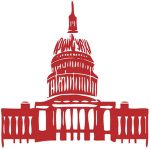Are Medicaid patients avoiding the emergency department?
While emergency departments are available 24/7 to evaluate patients regardless of diagnosis, certain conditions are considered "non-avoidable," meaning there is a significant risk for morbidity or mortality without hospital care, while others are "potentially avoidable," or can be managed in an outpatient setting. Using claims data for 15.6 million visits across the U.S., the authors of this study compared ICD-10 codes from ED visits made between 2020-2022 and 2018- 2019, and assessed for differences in rates of "potentially avoidable" and "non-avoidable" visits, which were defined using California's Department of Health Care Services and Medi-Cal criteria.
The authors found that overall, non-avoidable visits dropped 30% yet rebounded to 95% of expected levels by late 2022. However, sub-analyses found that while rates of non-avoidable visits among commercially insured and Medicare patients returned to normal, Medicaid patients' non-avoidable visit rates were only about 75% of pre-COVID levels. The data suggest that the most vulnerable, lowest socioeconomic groups may be underutilizing EDs for serious health conditions.
Pre-pandemic data show that Medicaid patients generally utilize EDs more frequently than other groups. The authors theorize that during the pandemic vulnerable populations might have delayed care due to barriers to care. The study raises concern that Medicaid patients might delay necessary ED care for serious conditions, risking poorer health outcomes.
This article suggests that efforts to minimize "unnecessary" ED visits may be misdirected, as patients, particularly from lower socioeconomic strata, may already be limiting ED use for non-avoidable reasons. Instead, the health care system should build trust and develop relationships with patients and communities. ED clinicians and leaders should consider how to minimize barriers to care and improve health equity, literacy, and trust among our most vulnerable patients.
Future research should identify which barriers are causing the greatest obstacles for patients since the pandemic. Legislators should focus resources on communities with low access to care and critical access institutions, which would allow for greater community outreach, increased services, and improved efficiency – potentially reducing barriers that community members may face. Policy measures to simplify Medicaid enrollment and understanding of costs could also reduce barriers to care. These efforts will be integral to sustained improvements in the use of acute care services.
Abstract
Leuchter RK, Craff M, Vangala S, et al. Socioeconomically disadvantaged groups may have underused the emergency department for non-avoidable visits, 2018-22. Health Aff (Millwood). 2025;44(3):322-332.
Abstract
In the decades preceding the COVID-19 pandemic, emergency department (ED) use increased more rapidly for socioeconomically disadvantaged patients than for advantaged patients, often because of barriers to accessing office-based care. However, it remains unknown whether the pandemic has had durable effects on socioeconomic disparities in ED use.
Method
We conducted a retrospective cohort study of ED visits in the U.S., using multipayer claims data. We used a difference-in-differences approach to compare ED visit rates between March 2020 and August 2022 with rates from the same months of 2018-19.
Results
Among 15.6 million ED visits, potentially avoidable visits persistently declined for all insured populations during the pandemic period. Potentially non-avoidable visits also declined early in the pandemic but rebounded to more than 95% of expected rates. However, stratifying by insurance revealed that this rebound occurred among commercially insured and Medicare fee-for-service patients; potentially non-avoidable visits only returned to about 75% of expected rates among Medicaid and dual-eligible patients.
Conclusion
Although this suggests a beneficial reduction in potentially avoidable ED use, it also indicates the simultaneous emergence of a disparity wherein socioeconomically disadvantaged groups may be underusing the ED for potentially higher-acuity illness.
EMRA + PolicyRx Health Policy Journal Club: A collaboration between Policy Prescriptions and EMRA
 As emergency physicians, we care for all members of society, and as such have a unique vantage point on the state of health care. What we find frustrating in our EDs - such as inadequate social services, the dearth of primary care physicians, and the lack of mental health services - are universal problems. As EM residents and fellows, we learn the management of myocardial infarctions and traumas, and how to intubate, but we are not taught how health policy affects all aspects of our experience in the ED. Furthermore, given our unique position in the health care system, we have an incredible opportunity to advocate for our patients, for society, and for physicians. Yet, with so many competing interests vying for our conference education time, advocacy is often not included in the curricula. This is the gap this initiative aims to fill. Each month, you will see a review of a new health policy article and how it is applicable to emergency physicians.
As emergency physicians, we care for all members of society, and as such have a unique vantage point on the state of health care. What we find frustrating in our EDs - such as inadequate social services, the dearth of primary care physicians, and the lack of mental health services - are universal problems. As EM residents and fellows, we learn the management of myocardial infarctions and traumas, and how to intubate, but we are not taught how health policy affects all aspects of our experience in the ED. Furthermore, given our unique position in the health care system, we have an incredible opportunity to advocate for our patients, for society, and for physicians. Yet, with so many competing interests vying for our conference education time, advocacy is often not included in the curricula. This is the gap this initiative aims to fill. Each month, you will see a review of a new health policy article and how it is applicable to emergency physicians.



